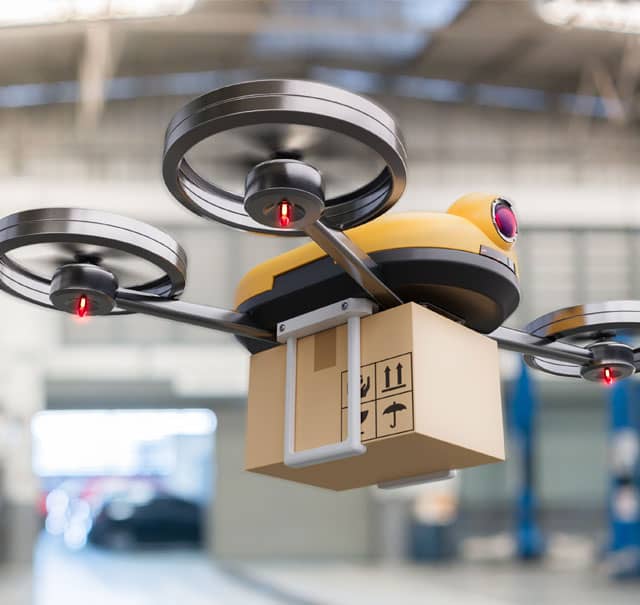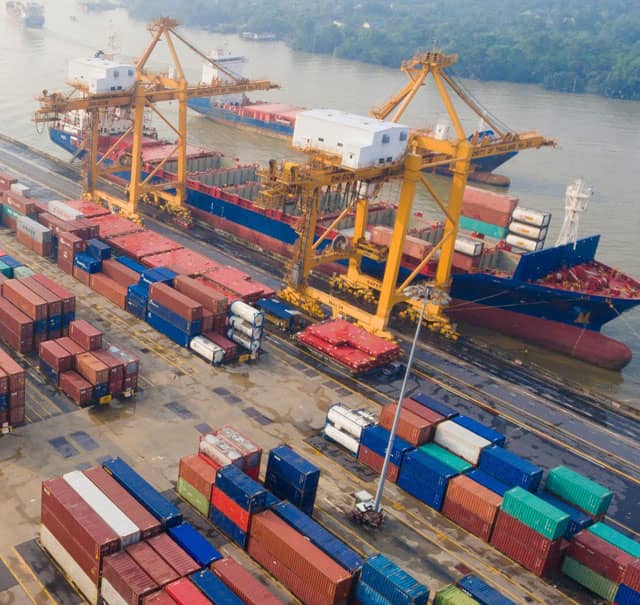5G in Industry & Logistics - Insights from Zebra Technologies
5G Solutions in Practice
5G test environments provide a platform for the development of next-generation technologies and the testing of revolutionary methods for the enterprises of the future.

Source: www.wlep.co.uk/worcestershire-5gtestbed-report-shows-productivitygain-with-5g-applications
INDUSTRY
Worcester Bosch in Great Britain
Worcester Bosch, the largest manufacturer of instantaneous water heaters in the UK, participated in a subsidized 5G trial with a 5G factory between 2018 and 2020. Worcester Bosch used 5G to run machine sensors in real time so that potential problems on the production line could be proactively addressed before they occurred. In addition, a network of collision detection sensors (hu- BMW Brilliance Automotive (BBA) in China BMW Brilliance Automotive (BBA) from China is the first car manufacturer to equip all four of its plants with a 5G mobile network. BBA already started building the 5G network in Shenyang in October 2018. For full 5G network coverage at BBA's automotive plants in Tiexi and Dadong, as well as the engine plant, 21 mobile towers and 35 5G base stations were built in the spring of 2019. After only three months of technical optimization, the 5G transmission rate increased man-machine and robot-robot) helped make the factory and its products much safer for both on-site workers and consumers.
Other Worcester-based companies also received funding to implement a 5G test environment. The results of the overall Worcester 5G project show that efficiency gains of up to 2% are possible through the introduction of 5G technology in manufacturing, which in this case equates to £2.6 billion.
AUTOMOTIVE INDUSTRY
BMW Brilliance Automotive (BBA) in China
BMW Brilliance Automotive (BBA) from China is the first car manufacturer to equip all four of its plants with a 5G mobile network. BBA already started building the 5G network in Shenyang in October 2018. For full 5G network coverage at BBA's automotive plants in Tiexi and Dadong, as well as the engine plant, 21 mobile towers and 35 5G base stations were built in the spring of 2019.
After only three months of technical optimization, the 5G transmission rate increased from an initial 600 megabytes per second to one gigabit per second in July 2019. Implemented in the plants with 5G are: augmented reality, cloud-based control of autonomous transport systems, human-machine interactions using mobile smart devices, robot- to-robot communication and communication between robotic equipment and the controller. In Europe, BMW is implementing 5G in some plants and vehicles. The BMW iX, released in 2021, is equipped with 5G and, like a smartwatch, will become another connected device for customers.
Automotive manufacturers are using 5G for intralogistics, augmented reality, the control of AMRs, human-machine interactions using mobile smart devices, and robot-to-robot communications, among other applications.

Source: www.press.bmwgroup.com/deutschland/article/detail/T0298955DE/bmw-brilliancenimmt-in-china-5g-mobilfunknetz-an-allenproduktionsstandorten-in-betrieb?language=de
Thanks to automation with 5G, the port of the future will be able to significantly increase the daily throughput and reduce the downtime of vessels.

Source: www.smw.sg/media-room/latest-news/2021/04/06/how-5g-is-making-waves-from-ship-to-shore
PORT LOGISTICS
Tuas Megaport in Singapore
The future operations center of the world's second largest port is to be located in the Tuas Terminal, which is being expanded into a megaport. The current system takes four days to unload a 12,000-ton ship with 30 lifts per day. With 5G, the lift capacity will increase to 50 per day, reducing the ship's laytime to just two days. Of critical importance here are automated guided vehicles (AGVs). With 4G, only 300 to 400 AGVs can operate on a network, but with 5G, the figure is 2000.
At Pasir Panjang Terminal, a 5G trial involving 30 AGVs and automated gantry cranes has been underway since 2019. 5G will also help avoid collisions between vessels within the port. Drones, which are currently still being tested, will also carry food and other consumer goods to ships anchored in the port. In 2 to 3 years, the entire port is expected to be 5G-enabled. Tuas Megaport will be the only port in Singapore after the closure of City Terminals in 2027 and Pasir Panjang Terminal in 2040.
INTRALOGISTICS
Lufthansa Technik in Hamburg
Shortly before the Corona pandemic, Lufthansa Technik set up a 5G campus network and was thus able to enable virtual inspections of engine parts for civil aviation customers during the lockdowns. The 5G network, which was still in the test phase in 2020, and the handling of this in engine maintenance have now become more permanent. Technicians use mobile devices to film engine damage. Internationally recognized experts analyze the damage in real time and request additional angles if necessary.
The connection remains stable and the transmission remains at an extremely high resolution, even if the technician has to move around the shop floor in the process. Remotely, the experts then assist in the repair. In another 5G-based application, Lufthansa uses AR and VR with head-up glasses and upstream screens to generate design suggestions for the interior of aircraft fuselages that are still empty. Both Lufthansa Technik's access network and core network comply with the 5G standard. This is a "stand alone" network.
The high data transmission rates with 5G enable high-quality image transmission and analysis in real time. This is a crucial benefit when it comes to engine maintenance.

Source: www.airliners.de/lufthansa-technik-erweitert-5g-campus-netzwerk-hamburg/64302





